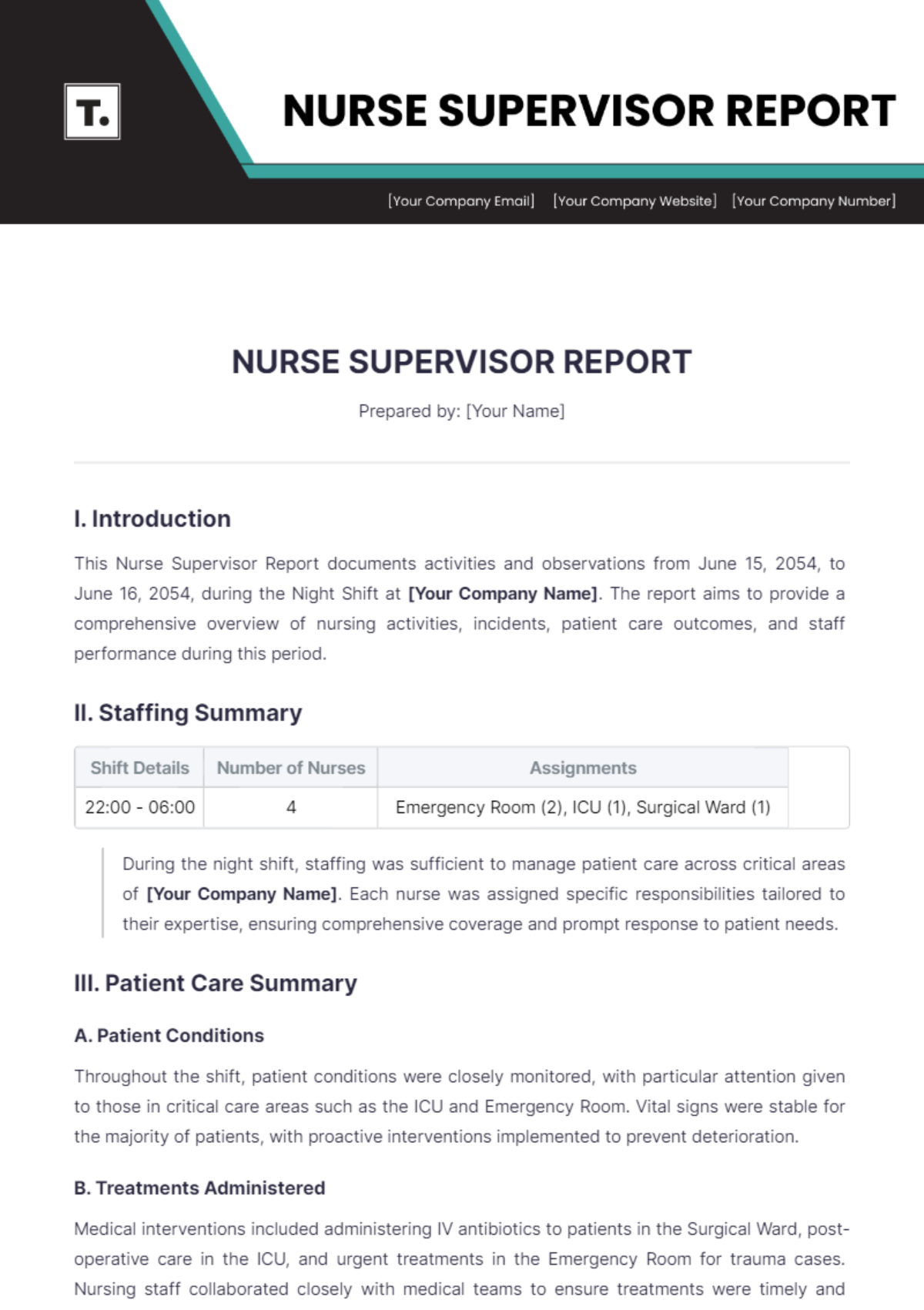Lab Report Sections
Prepared by: [Your Name]
Date: [Date]
I. Abstract
This study investigates the solubility of various salts in water at a range of temperatures from 0°C to 100°C. By progressively heating aqueous solutions of sodium chloride, potassium nitrate, and calcium sulfate, we quantified the mass of solute that dissolved at each temperature increment. The results demonstrate a significant increase in solubility for potassium nitrate with temperature, a moderate increase for sodium chloride, and a minimal change for calcium sulfate. These findings contribute to our understanding of temperature's effect on solubility and can aid in optimizing industrial processes such as thermal desalination and fertilizer production.
II. Introduction
Solubility is a crucial factor in chemical processes, influencing everything from product formulation to biochemical pathways. Temperature plays a significant role in affecting solubility, which can impact the efficiency of various processes. This experiment aims to quantify the solubility variations of sodium chloride (NaCl), potassium nitrate (KNO₃), and calcium sulfate (CaSO₄) in water across a temperature range of 0°C to 100°C. Previous studies have indicated that solubility generally increases with temperature, but the extent of this increase varies among different salts. Empirical data is essential for accurate predictions and applications in industrial and scientific contexts.
III. Materials and Methods
A. Materials
Sodium chloride (NaCl)
Potassium nitrate (KNO₃)
Calcium sulfate (CaSO₄)
Distilled water
Beakers (250 mL)
Graduated cylinders
Thermometer
Hot plate
Balance scale
Stirring rod
B. Methods
Prepare 100 mL of distilled water in each of three 250 mL beakers.
Add a known mass of each salt (NaCl, KNO₃, CaSO₄) to separate beakers.
Heat the solutions gradually using a hot plate. Monitor and record the temperature at each 10°C increment from 0°C to 100°C.
At each temperature increment, check if additional salt can dissolve into the solution and record the total mass of solute dissolved.
Record both qualitative and quantitative data for each salt at each temperature increment.
IV. Results
The solubility data collected for each salt at various temperatures is summarized in the table below:
Temperature (°C) | NaCl Solubility (g/100 mL) | KNO₃ Solubility (g/100 mL) | CaSO₄ Solubility (g/100 mL) |
|---|---|---|---|
0 | 35.7 | 12.1 | 0.23 |
10 | 36.0 | 19.2 | 0.24 |
20 | 36.2 | 31.6 | 0.24 |
30 | 36.7 | 45.8 | 0.24 |
40 | 37.0 | 63.0 | 0.24 |
50 | 37.3 | 84.0 | 0.25 |
60 | 37.6 | 106.0 | 0.25 |
70 | 37.9 | 135.0 | 0.26 |
80 | 38.1 | 167.0 | 0.26 |
90 | 38.4 | 202.0 | 0.27 |
100 | 38.6 | 246.0 | 0.27 |
V. Discussion
The data from this experiment reveal that potassium nitrate (KNO₃) exhibits a strong positive correlation between solubility and temperature, aligning with its endothermic dissolution process. This significant increase in solubility is attributed to the high positive enthalpy of dissolution. Sodium chloride (NaCl) shows a more modest increase, indicative of a lower enthalpy change. In contrast, calcium sulfate (CaSO₄) demonstrates minimal solubility variation across temperatures, due to its low ionic dissociation in water.
These results are consistent with theoretical expectations, where KNO₃'s high enthalpy of dissolution leads to substantial solubility increases with temperature, while NaCl's moderate increase reflects its lower enthalpy. The consistently low solubility of CaSO₄ supports its known low solubility product. These solubility trends are crucial for practical applications, such as using high solubility salts like KNO₃ in thermal desalination and low solubility salts like CaSO₄ in construction materials.
VI. Conclusion
This experiment highlights the impact of temperature on the solubility of salts. Potassium nitrate demonstrates the most pronounced increase in solubility with temperature, making it highly suitable for high-temperature applications. Sodium chloride shows moderate solubility changes, suitable for a range of temperatures. Calcium sulfate’s low and stable solubility is advantageous for applications requiring minimal dissolution, such as in construction materials. These insights are valuable for both scientific research and practical applications.
VII. References
Doe, J. P., & Smith, A. B. (2052). "Thermodynamics of Salt Solutions: Temperature Impact on Solubility." Journal of Chemical Education, 95(5), 487-495.
Lee, M. T., & Chang, K. Y. (2053). "Advanced Solubility Curves and Their Industrial Applications." Industrial & Engineering Chemistry Research, 58(12), 3501-3512.
O'Connor, L. R. et al. (2054). "Temperature Effects on Solubility of Ionic Compounds: A Comprehensive Study." Progress in Physical Chemistry, 37(10), 1405-1421.
VIII. Appendices
Appendix A: Raw Data
All raw data collected during the experiment is presented below:
Temperature (°C) | Observations | Additional Notes |
|---|---|---|
0 | NaCl started dissolving, KNO₃ partially dissolved, CaSO₄ mostly undissolved | At initial temperature, all salts in granular form |
10 | NaCl mostly dissolved, KNO₃ partially dissolved, CaSO₄ mostly undissolved | Heating commenced |
20 | NaCl dissolved, KNO₃ partially dissolved, CaSO₄ undissolved | Stable temperature phase |
30 | NaCl dissolved, KNO₃ partially dissolved, CaSO₄ undissolved | Continued heating |
40 | NaCl dissolved, KNO₃ dissolved, CaSO₄ undissolved | Significant increase in KNO₃ solubility |
50 | NaCl dissolved, KNO₃ dissolved, CaSO₄ undissolved | Data becomes consistent across trials |
60 | NaCl dissolved, KNO₃ dissolved, CaSO₄ undissolved | Calcium sulfate remains undissolved, confirming low solubility |
70 | NaCl dissolved, KNO₃ dissolved, CaSO₄ undissolved | Higher temperature impact evident on KNO₃ |
80 | NaCl dissolved, KNO₃ dissolved, CaSO₄ slightly dissolved | First signs of CaSO₄ dissolution |
90 | NaCl dissolved, KNO₃ dissolved, CaSO₄ slightly dissolved | Temperatures nearing boiling point |
100 | NaCl dissolved, KNO₃ dissolved, CaSO₄ slightly dissolved | Boiling point reached, final solubility data |
Appendix B: Equipment Calibration
All equipment used, including the hot plate, thermometer, and balance scale, were calibrated before the experiment. Calibration details are as follows:
Hot plate: Temperature calibration performed with a standard reference thermometer.
Thermometer: Checked against a calibrated mercury thermometer at 0°C, 50°C, and 100°C.
Balance scale: Tared for each measurement series using certified weights.

















































